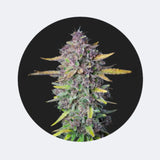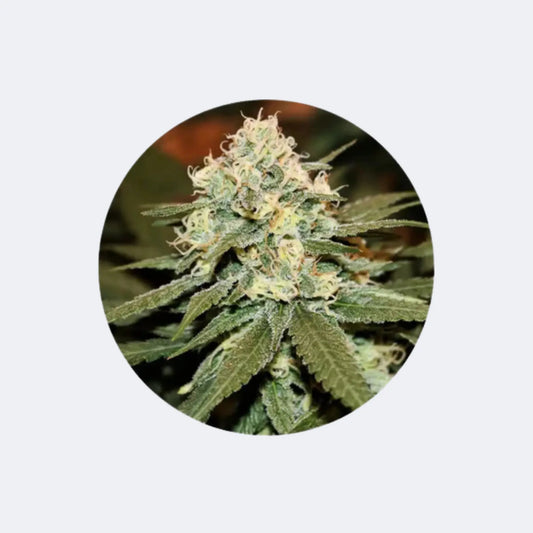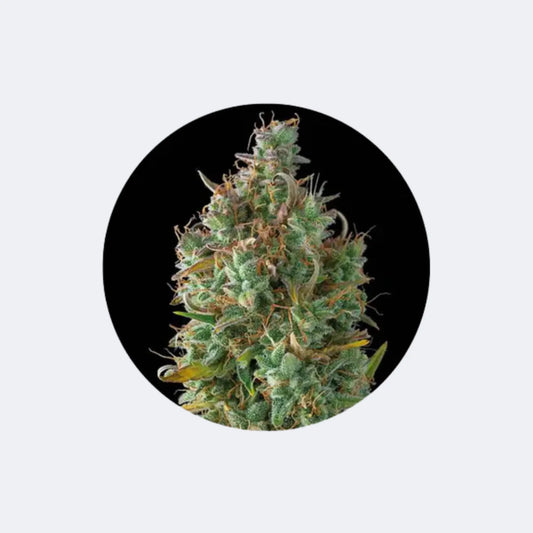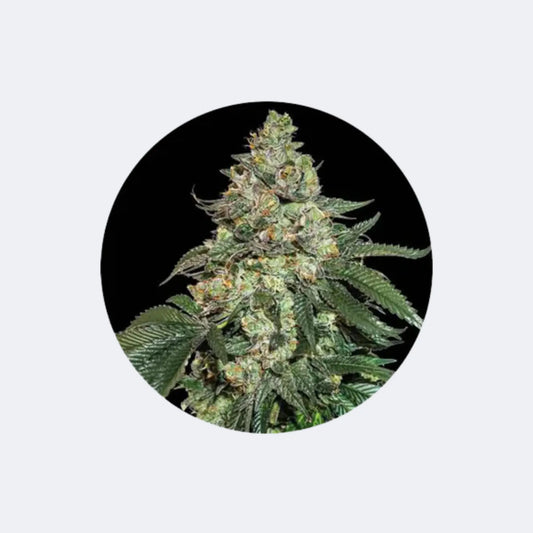
Low-stress training (LST) for cannabis plants
Andreas LeschkeShare blog post
"How to easily increase yields as a weed pilot"
The so-called low-stress method , as the name suggests, is an effective and relatively easy-to-implement way to increase yields in the form of larger flowers without subjecting the marijuana plant to excessive stress.
The enthusiastic home grower, who, just as school crossing guards help young people to find their way in traffic, becomes a plant guide to help the young vegetables to find their way better in the plant light world.
As we know, cannabis plants need a lot of light, which gives us the insight that by deliberately specifying the direction in which the shoots and branches develop, we can achieve larger flowers if we guide them towards shadowless light.
Bending and shaping the stems, branches and shoots becomes a real game changer, as it allows us to optimize the lighting of the flowers.
The following rule always applies to hemp plants:
"Light on the flowers means growth. Shadow on the flowers means stagnation!"
The meaning and goal of LST = Lowstress Training
The main feature of the Lowstress method is to conduct an effective training program where our beloved cannabis ladies recover so quickly that there is no growth stagnation.
Here, the fascinated gardener becomes the guide and pilot of his plants, because he dictates the growth direction to his plants at a very early stage and does not allow them to grow as wildly as "Mother Nature" intended.
The goal is to ensure that all flowers receive direct light during the flowering phase by carefully shaping the main stem, branches, and shoots, so that they are not hindered by shade from developing into large, juicy, effective, and tasty buds.
You read that RIGHT. I wasn't just talking about the size and consistency of the buds, but also the aroma and effect.
The reaction we want to achieve is to increase the natural production of auxins (growth hormones) in our miracle plant ladies, which require a lot of light.
It is therefore understandable that the more light the buds receive, the more natural growth hormones are produced, the more trichomes will form, which logically also produce more terpenes and THC in the resin glands, which will lead to a more intense aroma and potency of the final product!
The training method is designed to achieve a balanced canopy and ensure that the entire plant can receive maximum light.
The claim that low-stress training is primarily suitable for achieving a shorter plant rather than a tall one, as is the case with the high-stress methods of "topping" or "mainlining," is false. The benefit of low-stress training is simply to provide the plant with more direct light without it being blocked or diminished by its own shade.
While it's possible to cultivate a low-growing plant using the low-stress method, this isn't a requirement! This will become clearer when we turn to the implementation of LST.
Implementation of low-stress training through "massages, plant wire, plant clamps and other aids"
Some growers "massage" their plants even before the actual low-stress training begins. Often, they invest minutes every day in massaging newly developed branches by twisting and bending them to create micro-fractures in the plant tissue.
In this way, you want to achieve healthy and robust growth of the branches.
However, this "massaging" requires great skill and sensitivity. The maximum "damage" that can be caused to the plant is equivalent to the deformation of the branches caused by gusts of wind.
Massaging is similar to the high-stress technique of "super cropping" and, in my opinion, is more suitable for experienced growers, but less so for inexperienced cannabis training coaches.
This is also not a prerequisite for guiding the plants with low-stress training, since young branches and stems are elastic enough to be deformed with aids.
The timing of when to start low-stress pruning varies from person to person. It's important to start when the branches and twigs are still young, elastic, and not already hardened.
You can use various tools for this. You can shape branches with the help of plant string or wire, as well as with plant clips.
All we need to remember is that we should bend the trunk, branches and twigs in directions where they receive direct light in order to guide them out of their own shadow.
It is generally recommended to start this type of training when the plant has already developed 4 to 5 nodes, otherwise there is a concern that the root system is still too vulnerable and could be torn out once you start bending to deform the branches.
If you want to start with the main stem, you should ideally do this using two strings. Attach the top string approximately 5 cm from the top of the plant, and the second string approximately 5 cm from the bottom, to the main stem of the plant.
The pot should be prepared in advance by drilling holes in the top edge so that the string can be passed through and secured later.
Then, using the upper string, begin to carefully and slowly bend the trunk downward, so that the trunk acquires a slight slope and the tip is no longer the highest point of the plant. Branches and leaves that were below the crown of the plant before bending will now extend above it.
Please only bend the trunk as far as possible to avoid any kinking or breaking. Otherwise, you risk damaging the plant so severely that it could die.
Once the trunk has been bent down as far as possible, thread the string through the previously drilled hole in the pot and pull the string up around the part of the trunk where we had initially fixed the string, then thread it through the hole in the pot and secure it there.
After this step, we now attach the second string to the lower part of the plant, which we try to bend downwards in the same way as before. Please note that the lower part of the plant is not as flexible as the upper part, so there is a greater risk of breakage. Therefore, this should be done very slowly and carefully.
After the trunk has been bent and trained, you can also train and shape the other branches.
However, when it comes to branches and twigs, I would recommend bending them downwards or to the sides using plant clips, as this is much quicker and easier to do than using plant string or wires.
Using plant clips, you can begin shaping the shoots when they are approximately 2 to 3 cm long. However, care should be taken to ensure that the branches or shoots are sufficiently strong to support the weight of the clip and not break.

The route is the goal!
And it doesn't matter whether you prefer to implement low-stress training with plant string, wire, or clips, because all of these tools serve to show our beloved fun flowers a path where we can achieve our goal of achieving greater yields through light optimization!
Finally, it should be noted that LST can be used as a standalone training measure and leads to significant results. However, this training method can also be combined with the high-stress training "Topping."
For this reason, it's up to each individual whether they want to bend the main stem. Those who decide to top the plant will cut the main stem anyway, so they can save themselves the trouble of bending the main stem and focus on using LST to help the side shoots get better light.
We thank the author Jorge Rieger for this blog post on "Low Stress Training (LST) for Cannabis Plants." Feel free to follow him on his Facebook account. --> Click here






